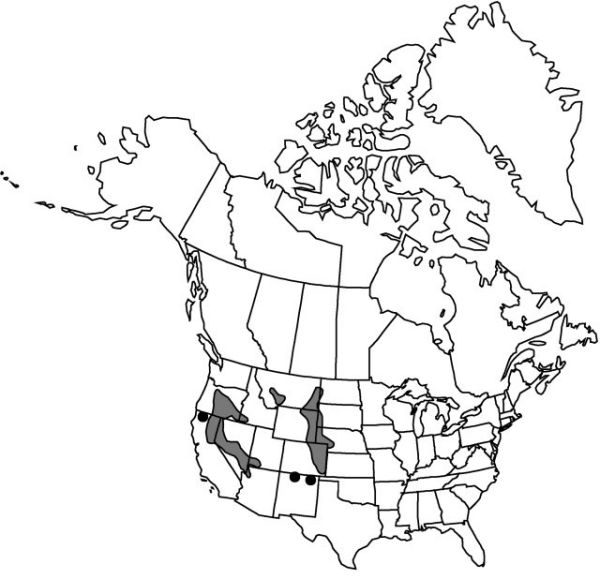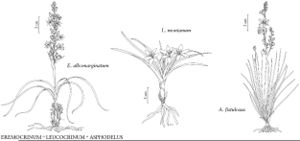Leucocrinum montanum
Ann. Lyceum Nat. Hist. New York 4: 110. 1837.
Plants 5–10 cm. Leaves spreading; blade 10–20 cm × 2–8 mm; sheath 3–8 cm × 5–8 mm, distalmost occasionally fibrous. Flowers: perianth 5–10 (–12) cm, tube (4–) 5–8 (–10) cm; tepals 2–2.5 cm × 3–7 mm; anthers 4–6 mm; pedicel slender, 0.5–3 cm. Capsules 5–8 mm. Seeds 3–4 mm. 2n = 22, 26, 28, ca. 50.
Phenology: Flowering spring (Mar–Jun).
Habitat: Scrub flats, short-grass prairie, sagebrush deserts to open montane forests, sandy to rocky areas
Elevation: 800–2400 m
Distribution

Ariz., Calif., Colo., Idaho, Mont., Nebr., Nev., N.Mex., N.Dak., Oreg., S.Dak., Utah, Wyo.
Discussion
Leucocrinum montanum exhibits an unusual chromosomal and pollen heteromorphism (M. S. Cave 1970; R. Ornduff and M. S. Cave 1975). Populations from the Rocky Mountain region, Utah, and central and eastern Nevada shed their pollen in monads and have x = 14, while populations from extreme western Nevada, California, and Oregon all shed tetrads and have x = 13. The occurrence of intraspecific dimorphism in pollen shedding is extremely rare.
The showy flowers of Leucocrinum montanum (L. S. Hannibal 1976; H. Rickabaugh 1975) with their long, white floral tubes are reportedly fragrant (V. A. Matthews 1986), and the subterranean capsules are more or less sessile on the rootstocks. Native Americans have eaten the roots (G. Kunkel 1984), and the Paiute and Shoshone tribes used the plant as a dermatological aid (D. E. Moerman 1986).
Selected References
None.
Lower Taxa
"thicker" is not a number.
